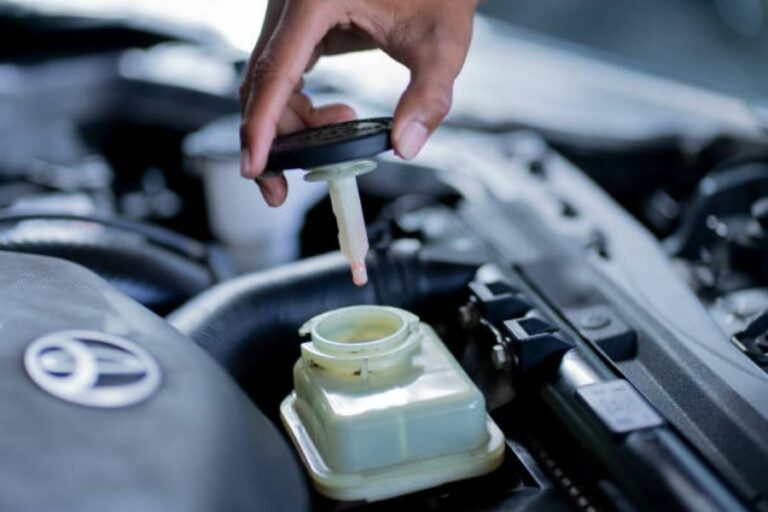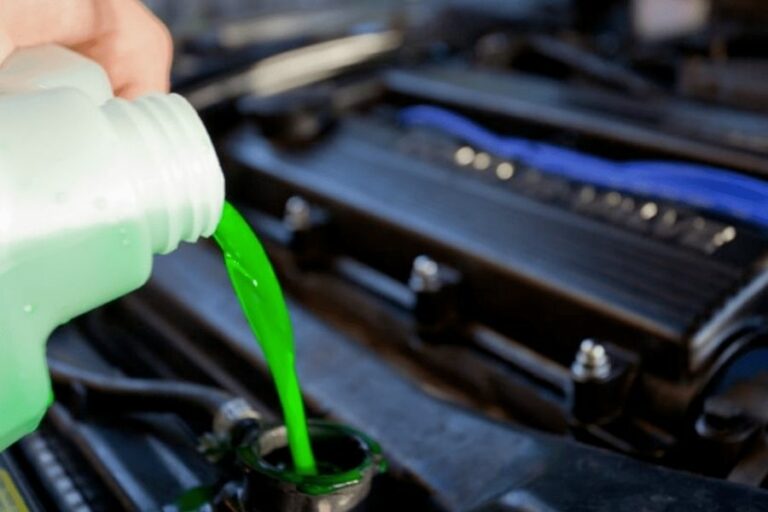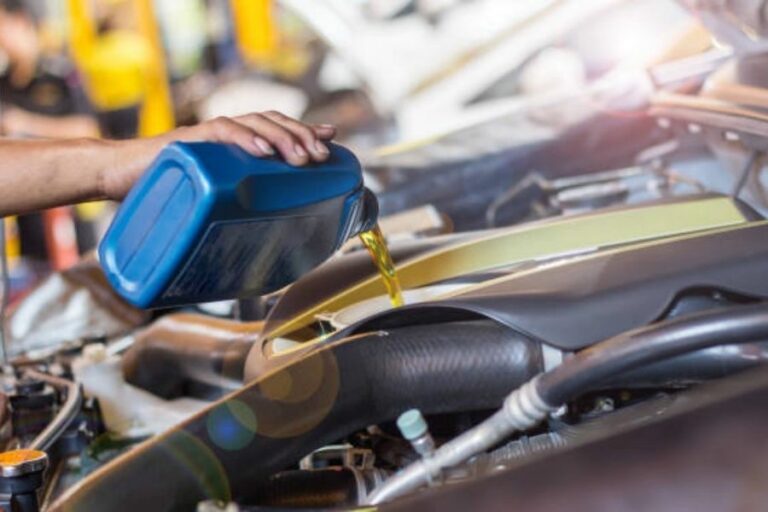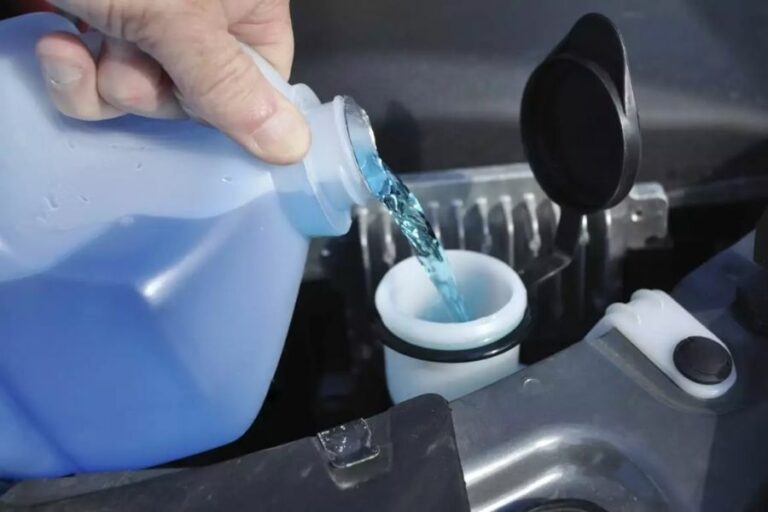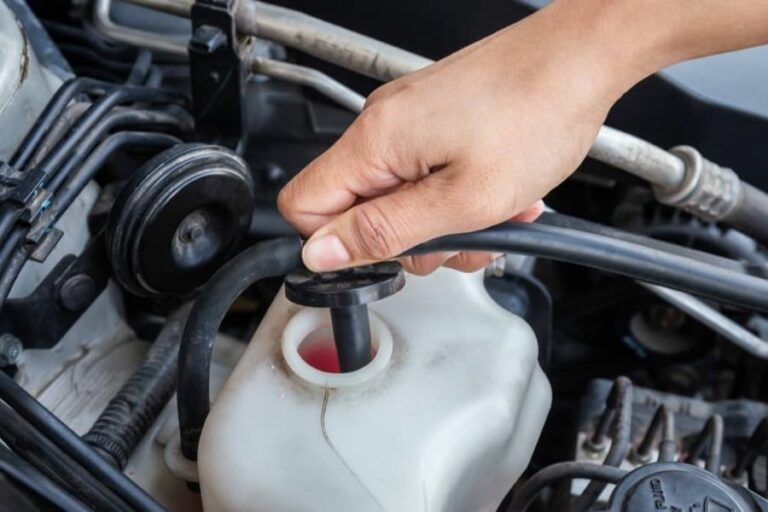Can A Broken Serpentine Belt Leak The Radiator Fluid?4 Issue
The serpentine belt drives several peripherals of a car engine, including the water pump. Since, radiator fluid goes through a water pump, you may wonder if a broken serpentine belt can leak radiator fluid.
If you are having issues with your serpentine belt, you might want to stick around until the end. So here we will discuss can serpentine belt broke coolant leak.
What Is a Serpentine Belt, and How Does It Work?
First, let’s talk about the serpentine belt and how it works. A drive belt, or serpentine belt, is a continuous belt that helps drive several devices in a car engine.
These include the alternator, water pump, air conditioning system, power steering pump, etc.
The way a serpentine belt works is pretty straightforward. It uses the rotation mechanism to drive the different peripherals of the engine. The belt runs over several pulleys, and the engine crankshaft essentially drives the belt.
When the belt starts rotating, it also turns the peripherals associated with the belt. From this rotation, the components we talked about earlier receive power and function accordingly.
In a nutshell, the serpentine belt is the connection that ensures that your car’s engine powers these extraneous components of the system.
Read Also: Can I Drive Semi That Has Leaked All Radiator Fluid
Can a Serpentine Belt Broke Start Leaking Radiator Fluid?
No, a broken serpentine belt isn’t directly connected to a radiator fluid leak in your car. However, if the serpentine belt breaks, it can affect the radiator or hoses. Here’s what can happen –
Usually, a serpentine belt is pretty close to your car’s radiator hose. Whenever the belt breaks, it can impact the radiator hose.
It may leak if the effect is too much for the hose to bear. As a result, your radiator fluid may leak from the hose.
Another way a broken serpentine belt can cause a radiator fluid leak is through overheating. A broken belt is responsible for causing overheating issues in your car.
And overheating can easily damage the radiator or the hoses, which eventually causes the radiator leak to occur.
Read Also: Can Exhaust Manifold Gasket Leak Radiator Fluid
How Does a Broken Serpentine Belt Affect Your Car?
Several other things can go wrong with your car when the serpentine belt breaks. These issues are bound to happen with a broken serpentine belt. Usually, it causes four problems with your vehicle. Let’s get through them.
1. The Engine Starts to Overheat
Overheating is the main issue you’ll experience with a broken serpentine belt. Whenever the serpentine belt breaks, it stops the water pump from flowing coolant through your engine.
No coolant is circulating around, which in turn overheats the engine. The overheating doesn’t stay just within the engine. A lack of coolant circulation can even overheat the passenger areas of the car.
2. Power Steering Malfunction
Since the serpentine belt also provides power to the power steering pump, a broken belt messes up the power steering function.
The main function of power steering is to ensure easy and smooth steering for your car.
So, with a broken serpentine belt, you will have trouble steering your car correctly. The problem is mainly noticeable in lower speeds or high traffic situations.
Read Also: Can A Thermostat Make It Leak Radiator Fluid
3. The Alternator Fails to Generate Power
Another issue you may face with a broken serpentine belt is that it disables the alternator from working.
As the belt is responsible for driving the alternator, the alternator doesn’t spin anymore when it breaks. Consequently, it can’t generate any power.
When the alternator can’t generate power, you won’t get any electrical power in your car either. A lack of power in the alternator also means the battery doesn’t charge properly.
4. The Air Conditioner Won’t Work
The serpentine belt is also connected to your car’s A.C. compressor. So, when the belt breaks, the A.C. compressor stops functioning correctly. The air conditioner will fail to work as soon as the compressor malfunctions.
This might not be a big issue compared to the others. Because if the weather is fine or it’s not too hot out there, you won’t have any problems with the air conditioner not working.
However, if it’s too hot, you might need to pay attention to the issue immediately.
Read Also: Can I Put Radiator Leak Fluid In My Mercedes Gl450
Signs of a Bad Serpentine Belt
As you can see, there could be a lot of problems if the serpentine belt breaks. Therefore, you must take action as soon as you notice symptoms of a bad serpentine belt. Here are some of the common signs –
- Wear, tear, or cracks on the belt can be a clear sign
- A squeaking noise indicates the belt is slipping or misaligned
- Stalling engine and low performance
- The check engine light comes on
- Grinding or whirring noises coming from the engine
When to Replace the Serpentine Belt?
Serpentine belts are typically built to last for a long time. Car manufacturers have different limitations on how long a serpentine belt can last. Generally, an ideal serpentine belt lasts about 60,000 to 100,000 miles.
You can refer back to the owner’s manual of your car to see what the manufacturer recommends for replacing the serpentine belt. Follow their recommendations to avoid the severe problems that we discussed above.
Read Also: How to Stop Transmission Fluid from Leaking into Radiator
FAQs.
If there is something more you wish to know, here are some common questions. We answer those questions to help you get more information regarding a serpentine belt broke coolant leak.
Can I drive my car with a broken serpentine belt?
Yes, you can drive your car even with a broken serpentine belt. However, it’s not recommended because it can overheat the engine and damage other components after a while.
How to stop radiator fluid from leaking?
If you have a small leak, you can try using radiator sealant to seal out the leak on the radiator. However, you must replace the damaged radiator or hoses if there is a larger leak.
Why does a serpentine belt break?
A serpentine belt will break over time due to wear and tear. Since the belt is constantly in use and goes through heat and friction, it’s often prone to damage.
How can you test your serpentine belt?
First, you must find the serpentine belt and see any cracks or frays on the belt. Along with that, you have to ensure the serpentine belt is tight because a loose belt can cause a malfunction in the engine.

